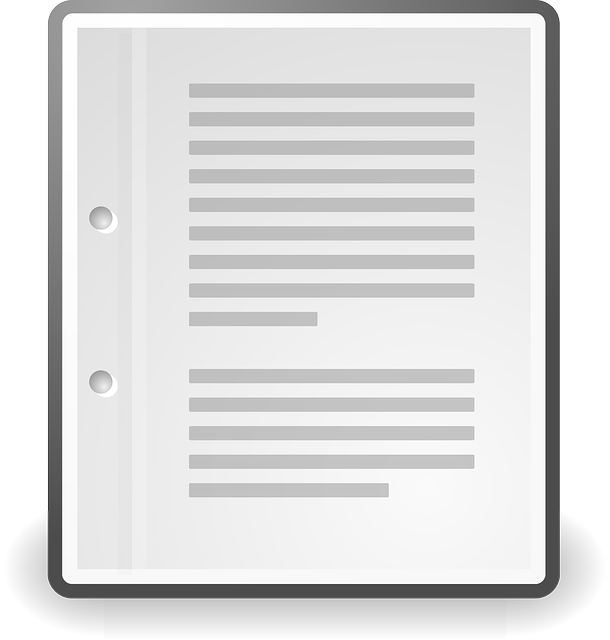Navigating UK Regulatory Compliance: A Guide to Translating SDS with Precision
To ensure compliance with UK health and safety regulations such as REACH and CLP, businesses must employ specialized translation services to accurately translate Safety Data Sheets (SDS) into English. These translations must reflect the unique regul…….

To ensure compliance with UK health and safety regulations such as REACH and CLP, businesses must employ specialized translation services to accurately translate Safety Data Sheets (SDS) into English. These translations must reflect the unique regulatory environment of the UK, including culturally nuanced language, scientific terminology, and idiomatic expressions specific to safety communication. The process demands expert linguists proficient in both the original and target languages, the use of translation memory software for consistency, and a rigorous quality assurance protocol involving peer reviews and direct comparisons with the source documents. Companies that have successfully adapted their SDS through these services include multinational chemical manufacturers and mid-sized pharmaceutical firms, which have effectively maintained regulatory compliance and ensured worker safety within the UK's stringent safety framework. Precision in translation for UK SDS is not just a matter of language but a critical component of legal and ethical business operations in the region.
Navigating the complexities of UK regulatory compliance for chemical substances necessitates precise and accurate translation of Safety Data Sheets (SDS). This article delves into the critical aspects of translating SDS to align with British regulations, highlighting the legal requirements, key elements that must be meticulously conveyed, and the cultural nuances unique to the UK market. We explore the importance of enlisting professional translation services for UK Safety Data Sheets to ensure data integrity and compliance. Through detailed steps, case studies, and best practices, this guide equips businesses with the knowledge to effectively translate SDS for the UK regulatory environment, safeguarding both legal standing and consumer safety.
- Understanding the Importance of UK Safety Data Sheet Translation
- The Legal Framework for SDS Translation in the UK
- Key Elements of a Safety Data Sheet and Their Translation Requirements
- Identifying Reliable Translation Services for SDS Compliance
- Steps to Effectively Translate SDS for UK Regulatory Compliance
- Cultural Considerations in Translating Safety Data Sheets for the UK Market
- Best Practices for Maintaining Data Integrity During SDS Translation
- Case Studies: Successful SDS Translation and Compliance in the UK
Understanding the Importance of UK Safety Data Sheet Translation

When a chemical or product is introduced to the UK market, it’s imperative that all safety-related documentation is accurately conveyed to comply with local regulations. Among these critical documents are Safety Data Sheets (SDS), which provide detailed information on the properties of substances, the risks associated with handling them, and the procedures for handling exposure incidents. Translation services for UK Safety Data Sheets (SDS) are essential due to the multilingual nature of global trade and the presence of non-English speaking stakeholders within the UK. Accurate translations ensure that health and safety information is effectively communicated to all parties, from employees and emergency responders to regulatory bodies such as the Health and Safety Executive (HSE). This not only protects human safety but also safeguards companies from legal repercussions and potential market disruptions. In the context of UK regulatory compliance, SDS translation is a critical step that cannot be overlooked, as it bridges language barriers while upholding stringent safety standards. Companies must engage with professional translation services that specialize in scientific and technical documentation to guarantee the fidelity of their Safety Data Sheets. This commitment to precise and compliant translations underpins responsible business practices within the UK’s competitive marketplace.
The Legal Framework for SDS Translation in the UK

When it comes to regulatory compliance within the United Kingdom, translating Safety Data Sheets (SDS) accurately and in accordance with legal requirements is paramount for businesses dealing with chemical substances. The Legal Framework for SDS Translation is rooted in the Control of Substances Hazardous to Health Regulations 2002 (COSHH), which mandates that safety data sheets must be provided in a language and form that can be readily understood by employees who do not have their mother tongue as the English language. This ensures that all workers, regardless of their linguistic background, can access vital information concerning the properties of chemical substances, risks associated with handling them, protective measures, and emergency procedures.
Businesses operating in a multilingual environment or exporting products to non-English speaking countries must engage with professional translation services for UK Safety Data Sheets to meet these legal obligations. These services are not only about linguistic accuracy but also adherence to the specific formats and data presentation standards set forth by both UK regulations and the European Chemicals Agency (ECHA), where relevant. The translated SDS should convey all necessary safety information without compromising the integrity or clarity of the original document. This is crucial for maintaining a safe working environment and complying with legal standards, thus avoiding potential legal ramifications or health risks associated with mistranslated or incomplete safety data.
Key Elements of a Safety Data Sheet and Their Translation Requirements

When navigating the complexities of UK regulatory compliance, the accurate translation of Safety Data Sheets (SDS) emerges as a critical task for companies operating within or exporting to the UK market. A well-constructed SDS is an essential document that provides detailed information on chemicals, including their hazards, handling procedures, and safety measures. For businesses with multinational operations, translation services for UK Safety Data Sheets are indispensable, ensuring that all key elements of the SDS are accurately conveyed in English to comply with UK health and safety regulations.
The core elements of an SDS that necessitate precise translation include the chemical’s identity, hazards identification, composition, first-aid measures, handling and storage procedures, disposal considerations, toxicological information, and environmental impact data. Each of these sections must be meticulously translated to reflect the original document’s intent and adhere to the specific requirements set forth by the UK’s Health and Safety Executive (HSE). Translation services specialized in SDS for UK regulatory compliance provide the expertise necessary to ensure that all technical terms, safety warnings, and data are accurately translated, thereby safeguarding worker safety and legal conformity. This meticulous attention to detail is crucial for maintaining operational integrity and protecting both employees and the environment from potential hazards associated with chemical handling.
Identifying Reliable Translation Services for SDS Compliance

When navigating the complexities of UK regulatory compliance, particularly for Safety Data Sheets (SDS), selecting a dependable translation service is paramount. The accuracy and precision of translations are critical to ensure that the chemical safety information conveyed in SDS aligns with legal requirements across different linguistic regions. For businesses operating within the UK or exporting products to the UK market, it is essential to engage with translation services that specialize in scientific and technical documentation. These services should possess a deep understanding of both the source and target languages, as well as the nuances of regulatory compliance specific to the UK’s REACH (Registration, Evaluation, Authorisation, and Restriction of Chemicals) and CLP (Classification, Labelling, and Packaging) regulations. A reputable translation service will not only translate text but also transpose safety-critical data accurately, ensuring that all SDS components, including hazard identification, first aid measures, handling precautions, and toxicological information, are correctly translated to facilitate compliance. It is advisable to vet translation services by examining their expertise in the field, client testimonials, and their track record of adhering to industry standards, such as ISO 17100 for translation services, to guarantee the quality and reliability of the SDS translations.
Steps to Effectively Translate SDS for UK Regulatory Compliance

When translating Safety Data Sheets (SDS) for UK regulatory compliance, it is imperative to engage with professional translation services that specialize in the relevant scientific and regulatory language. The first step in this process involves selecting a translation service capable of providing accurate translations, with expertise in the chemical or biological contexts often found within SDS documents. These professionals must not only be adept linguists but also knowledgeable about the health and safety regulations specific to the UK, such as REACH (Registration, Evaluation, Authorisation and Restriction of Chemicals) and CLP (Classification, Labelling and Packaging) regulations.
The translation process itself should follow a systematic approach to ensure compliance with UK legal requirements. This includes a careful examination of the original SDS to identify all necessary information, which must be conveyed accurately in the target language. Key sections such as hazards, protective measures, handling and storage procedures, and disposal methods must be translated with precision to avoid any misinterpretations that could affect user safety or regulatory adherence. Additionally, the chosen translation service should employ native speakers with a background in science or engineering to provide the most accurate translations. Post-translation quality checks are also crucial to verify the integrity of the content, ensuring that the SDS meets all UK compliance standards and is ready for distribution to end-users or regulatory bodies.
Cultural Considerations in Translating Safety Data Sheets for the UK Market

When translating Safety Data Sheets (SDS) for compliance with UK regulations, it is imperative to consider the cultural nuances that differentiate the UK market from others. The UK’s distinct regulatory framework necessitates translation services that are not merely linguistically accurate but also contextually appropriate. Cultural references, measurement units, and terminology specific to the UK must be reflected within these translations. For instance, while temperatures might be commonly expressed in Celsius across Europe, it is essential to use this unit consistently throughout the SDS when targeting a UK audience. Additionally, the use of idiomatic expressions or technical terms should be handled with care to ensure they are accurately interpreted and maintain their intended meaning within the context of safety information.
Furthermore, the translation must align with the UK’s legal requirements for hazard communication, which may differ from international standards. This includes adhering to the globally harmonized system (GHS) as adopted by the UK, which governs how health, physical, and environmental hazards and associated precautions are communicated on SDS. Translation services for UK Safety Data Sheets must, therefore, be adept at navigating these regulations while also considering the cultural context in which the SDS will be used. This ensures that the translated SDS effectively communicates safety information, facilitates compliance, and is accessible to UK-based users, thereby upholding their rights and expectations within the health and safety framework of the region.
Best Practices for Maintaining Data Integrity During SDS Translation

When translating Safety Data Sheets (SDS) for compliance with UK regulations, maintaining data integrity is paramount. The translation process must accurately convey all critical details from the original document to its translated counterpart. To achieve this, it is imperative to employ skilled linguists who specialize in scientific and technical terminology relevant to SDS. These professionals should be well-versed in both the source and target languages, as well as the industry-specific jargon found within SDS documents.
To ensure data integrity during translation, best practices include the use of translation memory software that maintains consistency across multiple translations and updates. This software can store previously translated segments, which facilitates accurate and consistent translations by ensuring terminology and phrases are used uniformly throughout the document. Additionally, a rigorous quality assurance process involving peer reviews and comparison checks against the original SDS is essential. This approach not only confirms the accuracy of the translation but also verifies that all safety information and precautions are accurately conveyed in the UK Safety Data Sheets, thus safeguarding compliance and protecting end-users effectively. Utilizing reputable translation services for UK SDS that adhere to these practices is crucial for organizations looking to maintain data integrity and meet regulatory requirements.
Case Studies: Successful SDS Translation and Compliance in the UK

In the realm of chemical management and safety, the translation of Safety Data Sheets (SDS) is a critical aspect of regulatory compliance within the UK. Companies operating in this jurisdiction must ensure that their SDS are not only accurate but also comply with the specific format and language requirements set forth by the Control of Substances Hazardous to Health (COSHH) regulations. A prime example of successful SDS translation for UK compliance is a multinational chemical manufacturer who, upon entering the UK market, faced the challenge of adapting their SDS to align with local standards. By leveraging specialized translation services for UK Safety Data Sheets, the company seamlessly integrated the necessary scientific terminology and hazard communication elements required by British law. This strategic move not only facilitated compliance but also demonstrated a commitment to worker safety and regulatory adherence.
Another case study highlighting the efficacy of professional translation services for UK Safety Data Sheets is a mid-sized pharmaceutical firm that expanded its operations to include the UK. The company recognized the importance of providing accurate and compliant SDS to ensure the well-being of employees handling their products. By partnering with a reputable translation service, they successfully navigated the complexities of translating technical content while maintaining the integrity of the original data. This endeavor resulted in fully compliant SDS that were readily understandable by UK-based health and safety professionals, thereby avoiding potential legal pitfalls and fostering a safer working environment. These instances underscore the significance of precise translation services for UK Safety Data Sheets in achieving compliance and safeguarding workers’ health.
In concluding our discussion on navigating UK regulatory compliance, it is clear that translating Safety Data Sheets (SDS) accurately and effectively is not just a matter of linguistic precision but also a critical component of chemical risk management. Companies operating in the UK must adhere to stringent legal requirements and cultural nuances to ensure SDS are comprehensible and compliant with local legislation. Utilizing specialized translation services for UK Safety Data Sheets is paramount, as these experts understand both the language intricacies and the regulatory landscape. By following the outlined steps and best practices for maintaining data integrity, businesses can confidently communicate safety information, thereby safeguarding workers and complying with UK laws. The case studies presented illustrate the successful translation and compliance efforts of companies within the UK market, proving that diligent SDS translation is not only achievable but also essential for operational success.



